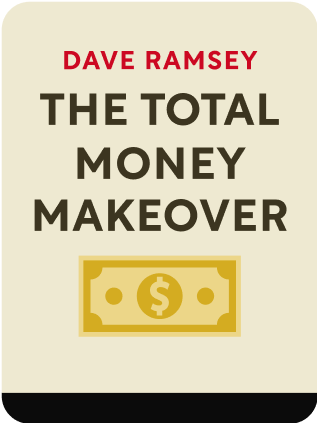

This article is an excerpt from the Shortform book guide to "The Total Money Makeover" by Dave Ramsey. Shortform has the world's best summaries and analyses of books you should be reading.
Like this article? Sign up for a free trial here .
What is baby step 4 of the Total Money Makeover program? Why do you need to save for retirement?
Baby step 4 is to start saving for retirement or to save more and grow your nest egg. Most people underestimate what they need for retirement so you should save now.
Read more about baby step 4 of the Total Money Makeover program.
Baby Step 4: Save for Retirement
Baby step 4 is building your wealth by investing for retirement—it’s the key to being financially fit for life. It requires gazelle intensity to get started, but once your nest egg is established, you can maintain your financial fitness with less effort, like a marathon runner who’s built up her strength through long practice and can run with less effort.
Many people invest in retirement so they can eventually escape a job they hate. But investing for the future in the Total Money Makeover program is more positive; the goal isn’t escape, but achieving financial security so you have choices: to work, write a book, travel, create art, and so on. If you invest wisely earlier in your life, you’ll reach a point where your money starts working more and you can work less, if at all.
Many people are likely to find themselves in a less enviable position. Various surveys on retirement saving have found:
- 70% acknowledge they haven’t saved enough for retirement.
- More than 40% haven’t tried to figure out how much they need for retirement.
- 40% of people making under $35,000 a year say winning the lottery would be the best way to ensure $500,000 at retirement.
- 80% think their standard of living will increase in retirement—although 56% in a CNN survey had less than $25,000 in savings.
Yet many people over age 65 are in dire financial straits. USA Today reported that out of 100 65-year-olds, 97 can’t write a $600 check, 54 are working, and only three are financially secure. Among people 65 and older, bankruptcies jumped 244% in a recent 10-year period.
This step is about acting now so you can be financially secure in your older years.
Invest 15% for Retirement
Invest 15% of your gross annual income for retirement and compounding interest will work for you.
At this point in the Total Money Makeover, don’t be tempted to save more than 15%, because you still need to save for your kids’ college education and pay off your home mortgage early. Also, don’t opt to save less and prioritize the kids’ college education or paying off the house—your children’s degrees won’t pay your retirement expenses, and it’s better to have a retirement fund at age 75 than a house but no money to live on.
When calculating your 15%, base it on your gross annual income. Exclude any company 401(k) match, as well as potential Social Security benefits. You can’t count on the government coming to your aid in future years—it’s your job to plan now for your future needs.
Invest in Mutual Funds
The best way to build your wealth over time is to invest in growth-stock mutual funds. (Shortform note: a mutual fund is a portfolio of stocks, bonds, and other securities managed by a professional. Individual investors can buy into it.)
Mutual funds go up and down in value in the short term, but over the long term (more than five years), they provide an average 12% return on investment.
While this book isn’t a detailed investment guide, Ramsey recommends the following (for further investment advice, you may want to attend one of his classes or read his book Financial Peace):
1) Choose mutual funds with a record of growth for more than five years, preferably 10.
2) Spread your investment dollars over four types of funds:
- Growth and Income (25%); also called large cap or blue chip funds
- Growth funds (25%); also called mid cap or equity funds
- International funds (25%)
- Aggressive growth (25%); called small cap or emerging market funds
3) When deciding where to invest first:
- Start with your company 401(k) plan if the company provides a match.
- After that, fund two Roth IRAs. You can invest up to $5,000 a year in a Roth IRA and it grows tax-free. Investing $3,000 a year from age 35 to 65 will give you $873,000 tax-free at age 65—for a $90,000 investment. (Shortform note: Roth IRA contribution limits change periodically to keep up with inflation. The limit for 2019-20 is $6,000.)
Make sure that, in total, you’re investing 15% of your gross annual income.
Baby Step 4: How Much Will You Need to Retire?
For a financially secure retirement, you should be able to live on 8% of your nest egg per year. If your investment returns average 12% annually and you take out 8%, your nest egg will continue to grow at 4% a year. The 4% growth enables you to keep up with inflation.
You should build the largest nest egg you can. To determine the total nest egg you’ll need, divide your desired annual income by .08. Here’s a worksheet to help you with baby step 4 and determine how much to save a month and how long it will take. For example, to live on $40,000 a year, you’ll need a total of $500,000.
Building wealth for retirement requires investing consistently over time—you won’t “get rich quick,” and you can’t jump in and out of investing. But the long-term results can be amazing. For example, if you make $50,000 (the average U.S. household income as this was written), and invest 15% ($7,500 a year or $625 a month) from age 30 to 70, you’ll end up with almost $8 million. If $625 a month sounds like a lot, remember that you won’t have any debt payments. In addition, you’ll probably increase your income over the years.
Disciplined investing now will create financial security in retirement. Starting earlier on investing is better, but starting at whatever age you are now is your only option. So focus on it in baby step 4.

———End of Preview———
Like what you just read? Read the rest of the world's best book summary and analysis of Dave Ramsey's "The Total Money Makeover" at Shortform .
Here's what you'll find in our full The Total Money Makeover summary :
- The 7 steps to achieving financial stability (you'll love #7)
- A fool-proof plan for becoming debt-free
- How myths about debt and money are crippling your financial health






